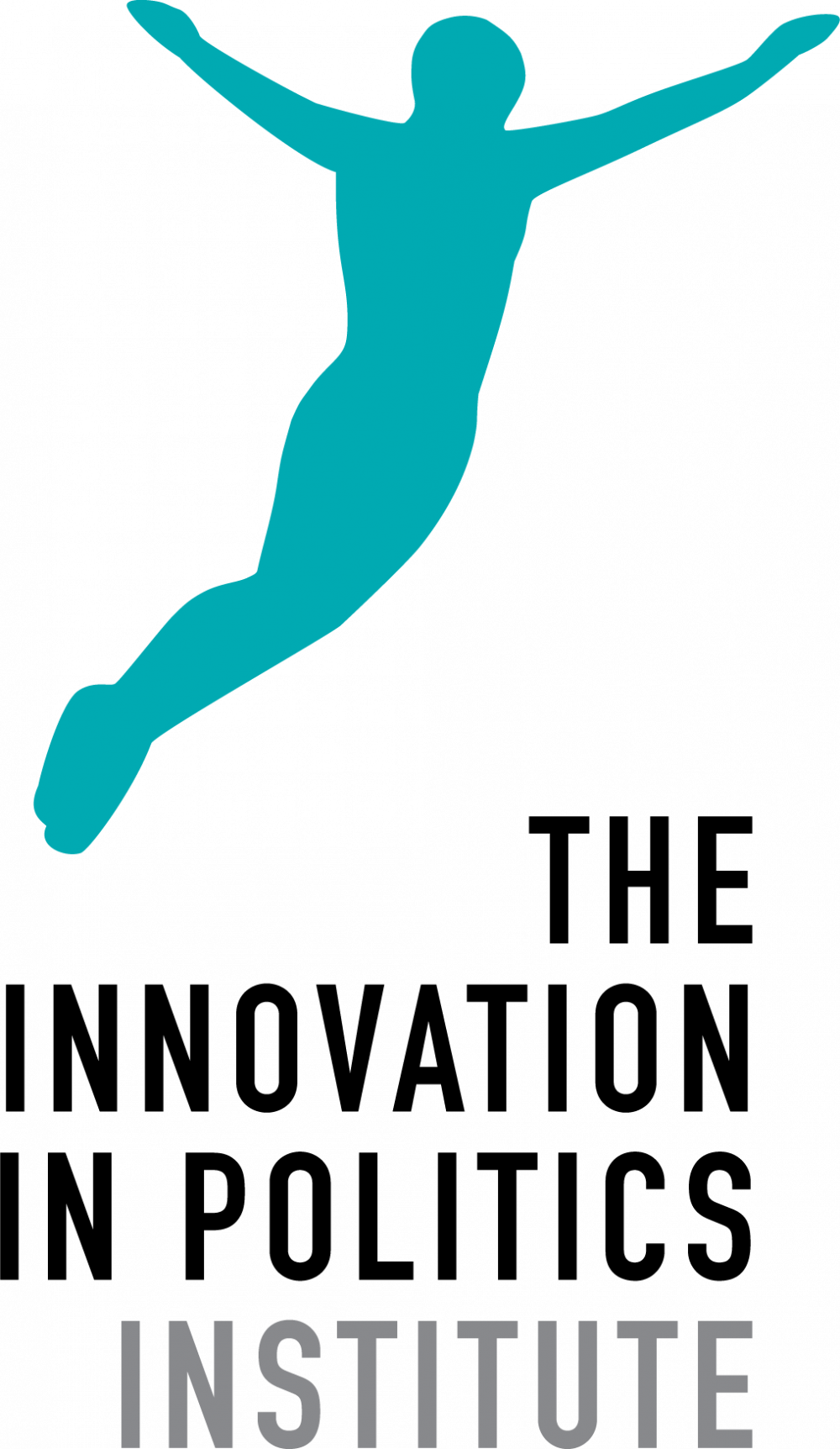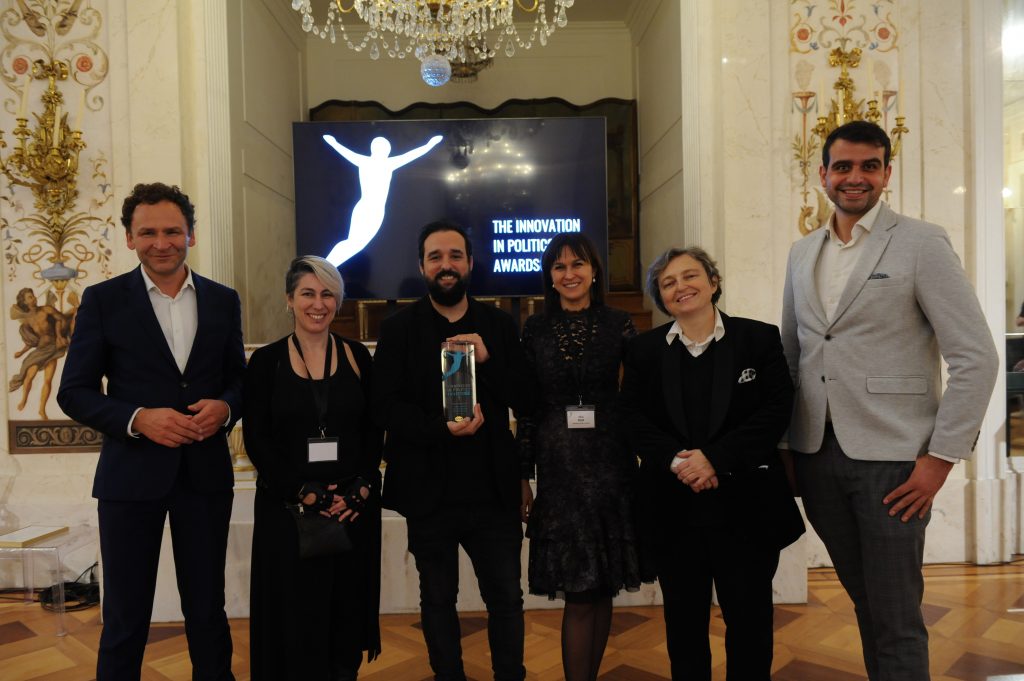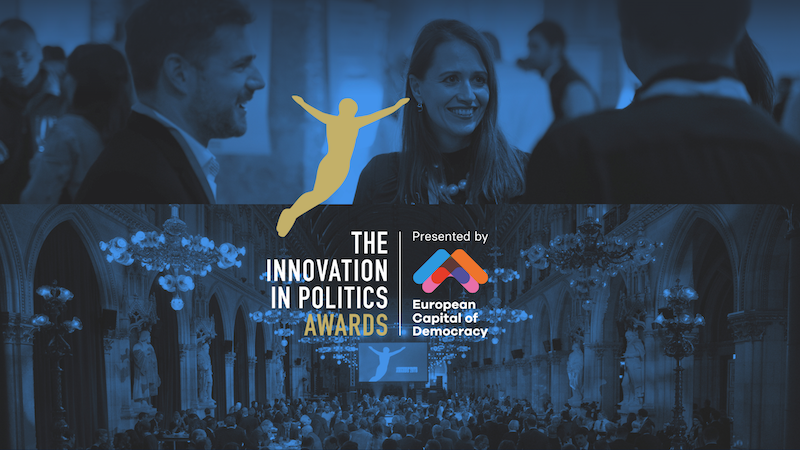Patricia Horrillo, communications manager (second from left in photo), and Raúl Oliván Cortés, director of open government and social innovation for the region of Aragon (third from left) are part of the team behind Frena La Curva/Brake The Curve. The open-source digital citizen’s platform allowed people to cooperate and organise social energy in the face of the COVID-19 pandemic. The project involved over 2,000 participants and has been replicated in 22 countries. Frena La Curva won the Innovation in Politics Award for COVID-19 strategies in 2021. We spoke to them about the project.
Note: This interview was conducted in January 2022
Could you explain the initiative in a few sentences?
Raúl: Frena La Curva is a citizen’s innovation platform we started in March 2020. The project started as a regional government initiative in Aragon and has been adopted by over 300 provinces since.
The core of Frena La Curva is to connect the social energy that came with the beginning of the pandemic with the possibilities of the institutions and beyond. When the initial lockdown began, people were at home and had a lot of free time. They wanted to help and show support in the context of the crisis. We tried to connect to this energy of solidarity.
Even though the idea came from the governmental sector, we wanted something unorthodox and flexible beyond the rigidity of government institutions. We decided to integrate innovators from all sectors of society – citizens, civil society, NGOs, hackers, and activists.
How did you reach out to these different actors and groups of people?
Raúl: We initially used social media and word of mouth. On the first day, I called five or six people – hackers, specialists in technology, and voluntary and solidarity organisations. After that, friends and acquaintances. In the past, we had made strong alliances with many organisations from all over the world who were now keen to spread the concept.
Patricia: We wanted to spread the message that you did not need specialised skills or knowledge to participate in this project. We wanted people to contribute in any way they could. That could be anything, from tips about how to work from home to ideas for entertaining your children when they are stuck at home.
Raúl: The logic of a digital project is that it is open to anyone. There are no borders. People could join Frena La Curva from anywhere. After a few weeks, communities from more than 20 countries had joined us, especially in Latin America, but also Poland and France.
How many people got involved?
Patricia: We received a lot of media attention, which helped spread our message. We were on TV, radio and in the newspapers. Many people reached out to us and registered their initiatives on the website.
There was an explosion of creativity. Nobody knew whether the lockdown would be one month, three, or more. People had to find a new way to understand their lives and figure out what they needed. The initiative gave them a tool to do so, both to access information and to share their skills and knowledge with others.
Raúl: It became one of the most extensive libraries of social innovation in the Spanish-speaking world.
What was the biggest obstacle you had to overcome?
Patricia: For me it was to communicate the project in a way that appealed to everybody. We did not want the project to send the message that it was only from the government or only for activists. That can be intimidating for people who do not fit into those boxes but still have valuable contributions.
Raúl: For me it was to ensure my institution had the right idea about the project. Frena La Curva is a new type of organisation because it does not only include public, social or private support but unites and transverses these sectors. The success of Frena La Curva shows that it is possible to set up that new kind of organisation.
Looking back, is there something you would have done differently?
Patricia: That isn’t easy to answer because it came from a unique moment in our lives. I never thought I was going to be in my house for three months without being able to see other people or go to the street. We did many things better than we would have in ordinary circumstances because the projects were the centre of our lives back then. It isn’t easy to imagine otherwise.
If you could give one piece of advice to somebody wanting to set up a similar project, what would it be?
Raúl: I learned that the key to social innovation is not to be afraid because it is impossible to innovate when you are scared. Innovation never goes the way you plan; something will always go wrong along the way. You must be fearless to keep going and work on changing the status quo.
Patricia: Trust is also important; we all trust each other. Even though we did not know each other in person, we functioned as a powerful machine. So, trust and courage are essential.
Is there a lesson to take away from handling this specific, massive, unexpected crisis for the future and for more significant crises to come?
Raúl: COVID is an excellent example of a complex crisis. It touched on every aspect of our lives. Public institutions are very good at handling minor and vertical problems.
We need different action plans when a problem is as transversal and complex as COVID. The government needs to learn that the social components of these crises are at least 50% of the problem.
Patricia: The public sector needs to incorporate people more, listen to them, and use their power. We are much more powerful when we join forces, which is why Frena La Curva had such an impact.
Everyone contributed with what they could do and that brought out the best in everyone. It was challenging for us as a society for everybody to be stuck in their homes with no end in sight. We were able to spread hope in a very dark moment, and that is essential.



